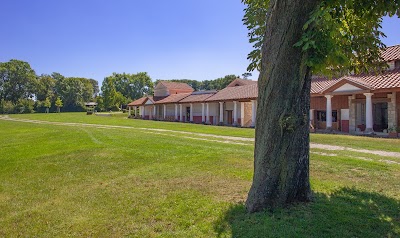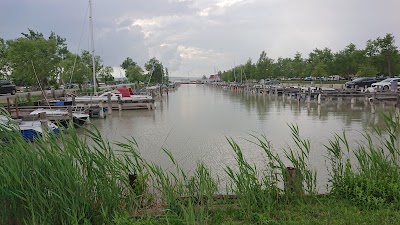Esterházy Palace (Schloss Esterházy)
Overview
Esterházy Palace, located in the picturesque Burgenland region of Austria, is a stunning example of Baroque architecture and serves as the cultural heart of the area. This magnificent palace stands as a symbol of aristocratic elegance and luxury, built by one of Austria’s most influential noble families—the Esterházy family.
Historical Origins
The origins of Esterházy Palace can be traced back to the late 13th century when it was initially constructed as a Gothic water castle. Over the centuries, the structure underwent numerous transformations, with the most significant renovation occurring in the late 17th century. Under the direction of Prince Paul I Esterházy, the palace was redesigned in the Baroque style to reflect the family's immense wealth and prestige. Esteemed architects, including Carlo Martino Carlone and later Andreas Einspinner, were commissioned to bring this grand vision to life.
Architectural Grandeur
The construction of the palace was a monumental endeavor, requiring the collaboration of skilled laborers, artisans, and architects. High-quality materials were sourced both locally and from distant lands, ensuring the palace's durability and visual splendor. Elegant sandstone and fine marble were extensively used, contributing to the opulent aesthetic that characterizes Esterházy Palace.
The Haydnsaal
One of the palace's most remarkable features is the Haydnsaal, a grand concert hall named after the renowned composer Joseph Haydn, who served as the court musician for the Esterházy family. This hall is celebrated for its exceptional acoustics and magnificent frescoes that adorn the ceiling, depicting muses and allegorical figures. Haydnsaal has hosted countless concerts over the years and continues to be a preferred venue for classical music performances.
Stunning Gardens
The palace is complemented by beautifully designed gardens, inspired by the French style, which reflect the Baroque era's emphasis on symmetry and grandeur. These gardens were meticulously planned to incorporate ornamental flower beds, fountains, and statues, creating a serene environment for leisure and representation.
A Cultural Hub
Throughout its history, Esterházy Palace has been the site of numerous significant events, ranging from lavish balls and gala dinners to important political meetings. It has acted as a social and cultural hub, drawing dignitaries and esteemed guests from across Europe.
Modern Preservation
Today, Esterházy Palace stands as a testament to Austria's rich cultural heritage. It is meticulously preserved and open to the public, offering visitors a glimpse into the grandeur of the Baroque period. The palace houses a museum that showcases a vast collection of artworks, artifacts, and historical documents, highlighting the Esterházy family's legacy.
Restoration efforts in recent years have ensured that the palace retains its historical charm while integrating modern amenities for visitors. Guided tours provide detailed insights into the palace's history, architecture, and the lives of those who once called it home.
A Vibrant Cultural Venue
Esterházy Palace is not merely a historical monument; it is also a vibrant cultural venue. It regularly hosts concerts, exhibitions, and various cultural events that attract history enthusiasts, art lovers, and tourists alike.
In conclusion, Esterházy Palace is a shining beacon of aristocratic heritage and a true jewel of Baroque architecture. Its rich history, cultural significance, and architectural beauty make it an invaluable treasure in Burgenland, Austria.









